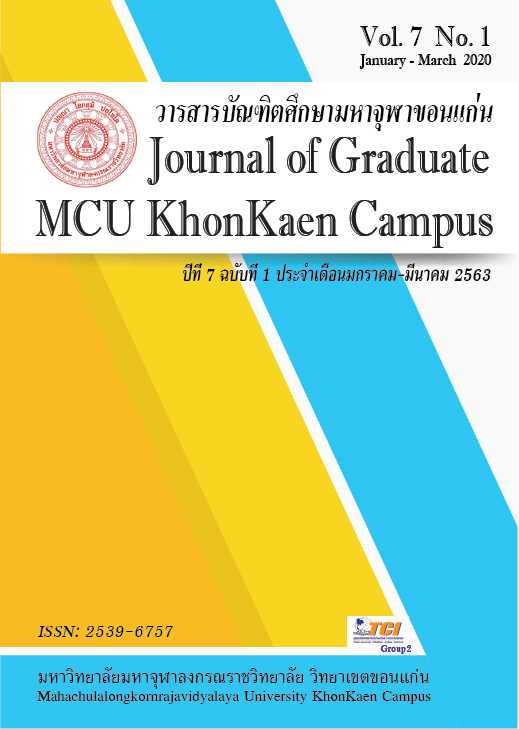THE ORIGIN AND EVOLUTION OF FRESH FOOD MARKET AND SMALL TRADERS IN LOCAL THE NORTHEAST OF THAILAND
Main Article Content
Abstract
The objectives of this research are; 1) to study the origin and evolution of fresh food market and small traders in locals of the northeast, 2) to examine the link between patterns of fresh food markets and wider socioeconomics and culture, and 3) to propose policy measures for fresh food market improvements. This study employed both qualitative and quantitative methods to obtain the data. There were 123 small traders, and 30 fresh food market managers were interviewed using semi-structured question guide. In addition, there were 577 small traders and 480 buyers of 12 fresh food markets in Khon Kaen, Nakornphanom, Ubonratchatani and Srisaket were interviewed using structured questionnaire. The results of this research are summarized below.
The most important factors contributing to the origin of fresh food markets and has continued to propel the growth of fresh food markets are 1) the establishment of government agencies at locals, 2) the expansions of roads and railroads, and 3) the increase of population. The factors negatively contributing to fresh food markets include 1) the decline of prices of local products, 2) the explosion of temporal and mobile markets, and 3) the expansion of modern trade. Patterns of fresh food markets are classified into 3 types; 1) the coexistence of both morning and evening market in the same place, 2) the morning market with partly operating in the evening, and 3) morning market only. Eighty t0 ninety percent of small traders are female, most of small traders were in previous farmers and have continued to cling on agriculture along with selling foods in the markets. The reasons for entering into food selling is that trading is less industrious and better income. The average daily profit is about 1294 bahts, representing for 31 percent of sell volumes. Most small traders are living in their own houses with less than 5 kilometers distance from the fresh food markets. Over 90 percent of the small traders reported that they want to continue selling food, and about 50 percent said that they want to pass on their business to their kids. The small traders suggest that the government should establish funds for the best fresh food markets and funds for food safety.
Article Details
References
นิพนธ์ พัวพงศกร และคณะ. (2545). รายงานการวิจัยเรื่องการค้าปลีกของไทย: ผลกระทบของการแข่งขันจากผู้ประกอบการค้าปลีก
ขนาดใหญ่จากต่างประเทศ. กรุงเทพฯ: คณะกรรมการวิจัยแห่งชาติ.
ราชบัณฑิตยสถาน. (2555). พจนานุกรม พ.ศ. 2554 ฉบับราชบัณฑิตยสถาน. กรุงเทพฯ: ซีเอ็ดยูเคชั่น.
สุวิทย์ ธีรศาศวัต และคณะ. (2561). กำเนิดและพัฒนาการของตลาดสด ตลาดนัด และผู้ค้ารายย่อยในภาคอีสาน. กรุงเทพฯ: สำนักงาน
กองทุนสนับสนุนการวิจัย.
สุวิทย์ ธีรศาศวัต และคณะ. (2561). กำเนิดและพัฒนาการของตลาดสด ตลาดนัด และผู้ค้ารายย่อยในภาคอีสาน. กรุงเทพฯ: สำนักงาน
กองทุนสนับสนุนการวิจัย.
สุวิทย์ ธีรศาศวัต และคณะ. (2562). กำเนิดและพัฒนาการของตลาดสดและผู้ค้ารายย่อยในภาคอีสาน. กรุงเทพฯ: สำนักงานกองทุน
สนับสนุนการวิจัย.
Polanyi, Karl. (2001). The Great Transformation: The Political and Economic Origins of Our Time. Massachusette:
Meacon Press

